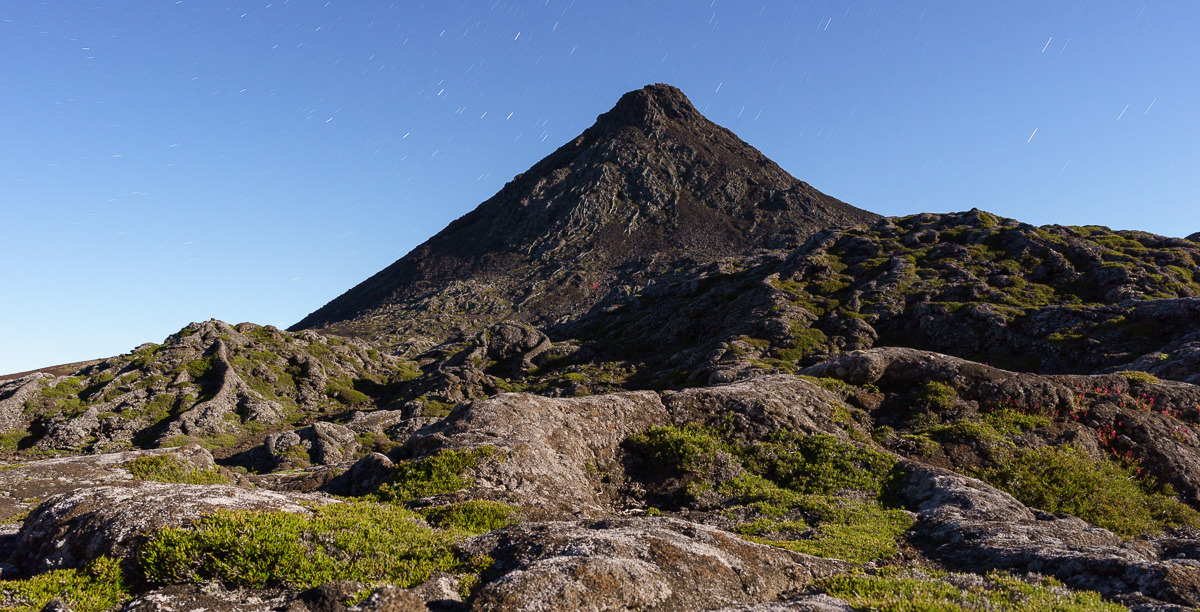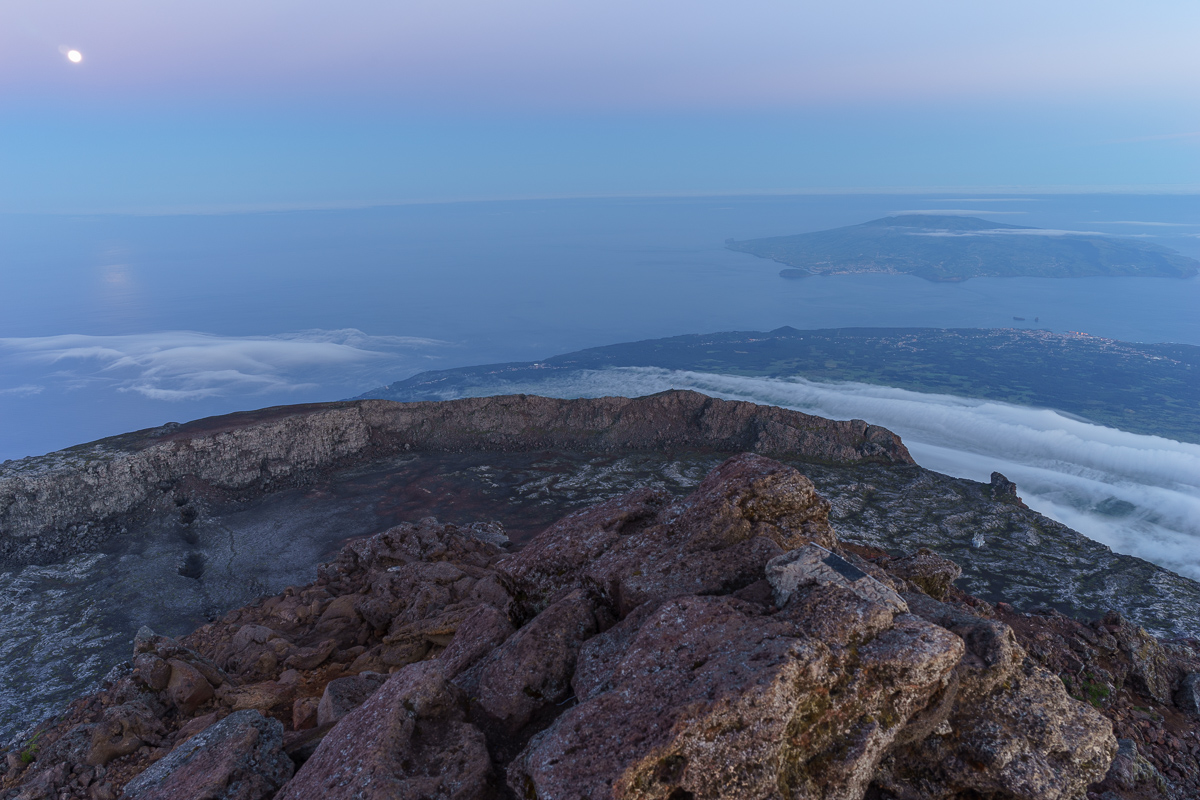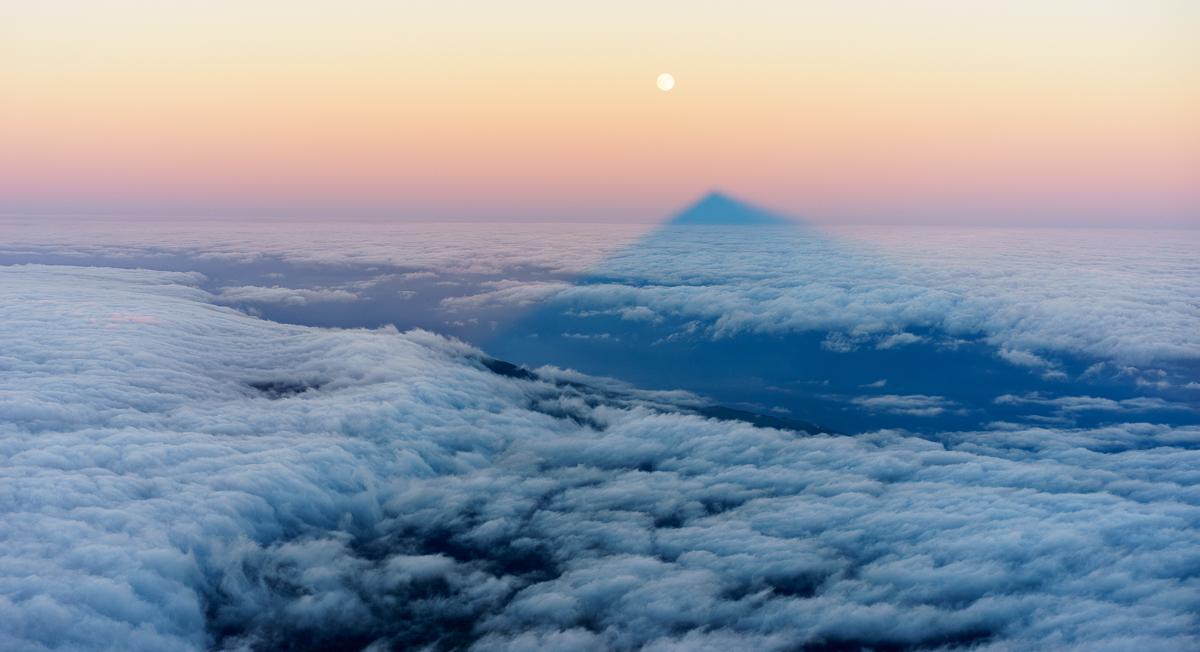This year I had a special birthday (the 50th), atop Portugal’s highest point, the mountain of Pico, in the Azores island of the same name. At 2351m above sea-level, the volcano rises majestically from the ocean, being the third highest in the Atlantic to rise from the ocean bottom. The idea to go up the mountain was my wife’s, and I am grateful to her for such an incredible experience.
We planned everything in due time, since July is a busy month in the Azores. We wanted the event to be a family one, so my son and daughter also went with us. After some research, we decided to book with Tripix, a recently established adventure company. Everything went smoothly, the guide was very good and knowledgeable. The company is also ecologically sound, as it provides wooden poles, not metal tipped ones; the latter end up eroding the lava rocks, which is bad, especially with the increasing number of trekkers. We went up on the afternoon of the 19th, camped inside the crater, and came down the following morning.
The climb is not a technically difficult one, but it still requires relatively good physical shape, due to steep inclines, and some loose ground near the top. Our group consisted of 8 people, plus the guide. The Pico volcano is integrated in a natural reserve, and provides amazing views over the central group of islands of the Azores archipelago, like Faial and São Jorge. It took us about 5 hours to climb up from the starting point at 1200m altitude, and about 3 hours to come down the following day.
Of course I wanted to do some photography, and it is always a challenge to decide what to take on the backpack; especially when also carrying a tent, sleeping bag, food, and some extra clothing for the colder night. In the end, I decided to carry my two Sony A7 cameras, one with the Zeiss Batis 25mm lens, and the other with the Sony 55 lens. Plus, a small but robust Manfrotto table top tripod for long exposures at night. This light kit fitted nicely inside a small 22 litre backpack.
It just happened that the night of the 19th was a full moon, which was a good opportunity to photograph under special conditions at night; also, the weather was clear during the sunset and the sunrise, so I managed to get some interesting shots of the moonset and the shadow of the volcano. We stopped a few times going up, which allowed for some picture taking time of the great views. In the morning of the 20th, we woke up at 4am to climb the Piquinho, the small volcanic cone created by the last eruption in the year 1718. From there, we watched the blue hour developing, and after that the sunrise. The volcano is still active, with some fumaroles smoking through the vents.
In the end, this was a memorable experience, that my family enjoyed very much. And I came away with some unique photos for my portfolio too. The Sony kit performed really well, never missing a beat.




